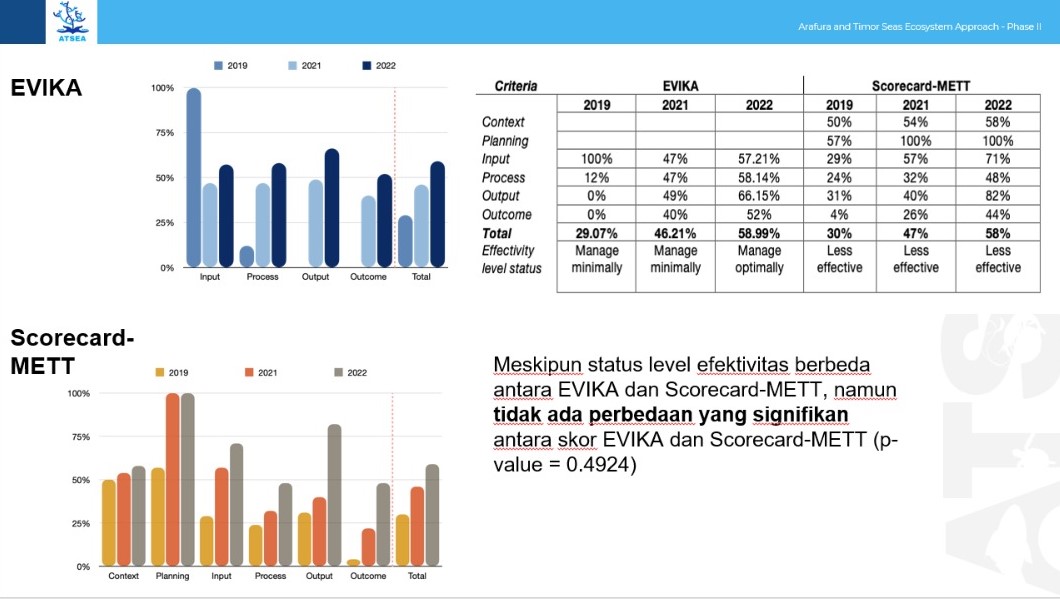On 28 March 2023, the ATSEA-2 Project organised a meeting at the Marine and Fisheries Research and Human Resources Agency to evaluate the management effectiveness of the Southeast Aru Marine Protected Area (MPA). The meeting aimed to assess the MPA’s effectiveness using two tools: a new evaluation tool for the management effectiveness of marine conservation areas, known as EVIKA; and the Management Effectiveness Tracking Tool (METT).
Attendees included a range of stakeholders: the Directorate General of Marine Spatial Management, the sub-directorate general of Marine Conservation and Biodiversity and the Fisheries Research Centre from the Ministry of Marine Affairs and Fisheries (MMAF); the Southeast Aru MPA Work Unit; the Directorate of Conservation Management of the Ministry of Forestry and Environment (MoEF); the National Coordinator Unit of ATSEA-2 Indonesia; and an EVIKA tool analyst.
The aim of the meeting was to facilitate the exchange of information and knowledge among the stakeholders involved. A key focus was to compare effectiveness via scores produced by METT and EVIKA – both of which provide standardised assessment criteria for evaluating MPAs.

During the discussion, it was established that converting EVIKA results into METT would be feasible, due to a number of fundamental aspects shared by both tools. Both EVIKA and METT employ a scoring system for assessment, albeit with some variations in the evaluation process. In EVIKA, the evaluation initially involves self-assessment conducted by the assessment team; stakeholders, including the local community, then participate in the verification stage. On the other hand, the METT process emphasises stakeholder involvement right from the beginning of the assessment process, employing a participatory approach.
In three of the last four years, the Southeast Aru MPA has completed assessments using EVIKA, yielding results of 29%, 46% and 59% in 2019, 2021 and 2022, respectively. After combining EVIKA data with METT results, the scores became: 30% (2019), 47% (2021) and 58% (2022); there were no significant differences between the evaluation scores obtained from EVIKA and Scorecard-METT. Minor variations in effectiveness levels between the two tools can be attributed to the different terminologies used by the respective ministries involved; regardless, the overall management effectiveness levels remained consistent.
Based on EVIKA-METT assessment, several challenges have been identified for enhancing the management effectiveness of the Southeast Aru MPA. These challenges include improving efforts to communicate MPA boundary demarcation, raising stakeholder awareness and involvement, expediting updates to MPA management practices, strengthening stakeholder engagement and participation, encouraging local community involvement in MPA management activities, enhancing human resources capacity, developing outreach strategies that incorporate local context and target specific populations, and identifying sustainable financing mechanisms to support Southeast Aru MPA management. As these indicators are interconnected, interventions aimed at improving one indicator can have a positive impact on others, leading to overall enhancement of the Southeast Aru MPA’s management effectiveness.
By Sila Kartika Sari


